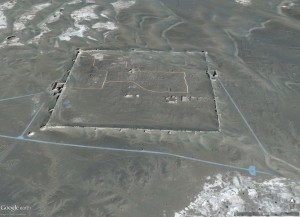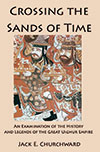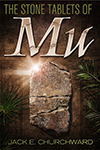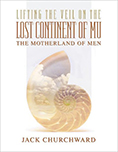Continuing from Part 2.
Also see Part 1
In answering the question, “where did James’ assertion that Koslov was not allowed to take anything except pictures come from?” (see Looking for the Great Uighur Empire Capital Part 1), we should examine an undated and unattributed newspaper article from one of James Churchward’s scrapbooks.

The entire transcribed article is included as footnote in “Lifting the Veil on the Lost Continent of Mu Motherland of Men,” but it begins as follows:
One of the most picturesque and important of archaeological discoveries of the century has been made by Professor P. K. Kozloff, of Moscow, under the sand-covered ruins of Khara Khoto, in the Gobi Desert of Mongolia.
Khara Khoto, or the Black City, was the capital both of Genghis Khan and Kubla Khan, two of the great Mongol conquerors, who during their lives swept with their hordes over Asia and a good part of Europe. It was of Kubla Khan that the English poet, Coleridge, wrote that strange and haunting verse of his, beginning:
“In Xanadu did Kubla Khan
A stately pleasure-dome decree
Where Alph, the sacred river, ran
Through caverns, measureless to man
Down to a sunless sea.”
Digging down through half-a-hundred feet of shifting sand, Professor Kozloff has unearthed there the tombs of what appear to be the legendary Seven Kings of ancient Tartary – certainly the oldest kings that ever ruled any civilization. At this depth the tools of his men struck brick and fossilized black wood. Cutting through this an opening large enough to let a man go through, they lowered Kozloff into the black depths.
As the explorer reached the bottom of the secret chamber his flash revealed one of the most astonishing sites ever seen by an archaeologist – stranger than the scene that met the eyes of the finders of old Pharaoh Tutankhamen’s tomb.
and a few paragraphs later:
…By presenting his friendly Mongolian Prince with a phonograph and records of the chants of lamas and songs of the shepherds, the latter became unusually friendly and said that if he could present similar marvelous objects to a number of other princes and the lamas he might get permission for the excavation of Kara Khoto.
But with the condition that he should not take away the dead, or anything that belonged to them, but see and copy everything he wished, and cover again the place with sand.
The article describes the tomb in which Koslov was lowered contained the tomb of seven great kings of Tartary that composed a dynasty from 8000 to 7000 years ago. Each of their mummies were seated upon thrones, “each dressed in gorgeous robes and with heavy gold masks over their faces” and on the tables in front of them “were large bowls of jade, whose cups showed that the had once held some crimson liquid.”
The Uighurs, as the race was called, reached a high degree of culture: they knew astrology, mining, textile industry, architecture, mathematics, agriculture, writing and reading, medicine and Magianism. They had excellent training in decorative arts on silk, metal, and wood, and they made statues of gold and silver and wood, clay and bronze.
This article seems to be a source for the Great Uighur Empire that James wrote about in his books as shown in the following from the 1926 Lost Continent of Mu Motherland of Men page 107 and the 1931 Lost Continent of Mu page 120:
The Uighurs had reached a high state of civilization and culture: they knew astrology, mining, the textile industries, architecture, mathematics, agriculture, writing, reading, medicine, etc. They were experts in decorative art on silk, metals and wood, and they made statues of gold, silver, bronze and clay; and this was before the history of Egypt commenced.
At least one question arises, “How much of this newspaper article can be believed?” For instance, was Khara Khoto really the capital of Chinggis Khan and his grandson Kublai?
We will explore this question in the next posting…










 RSS - Posts
RSS - Posts